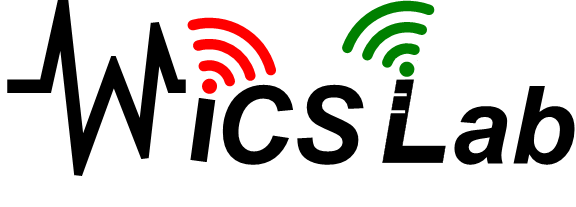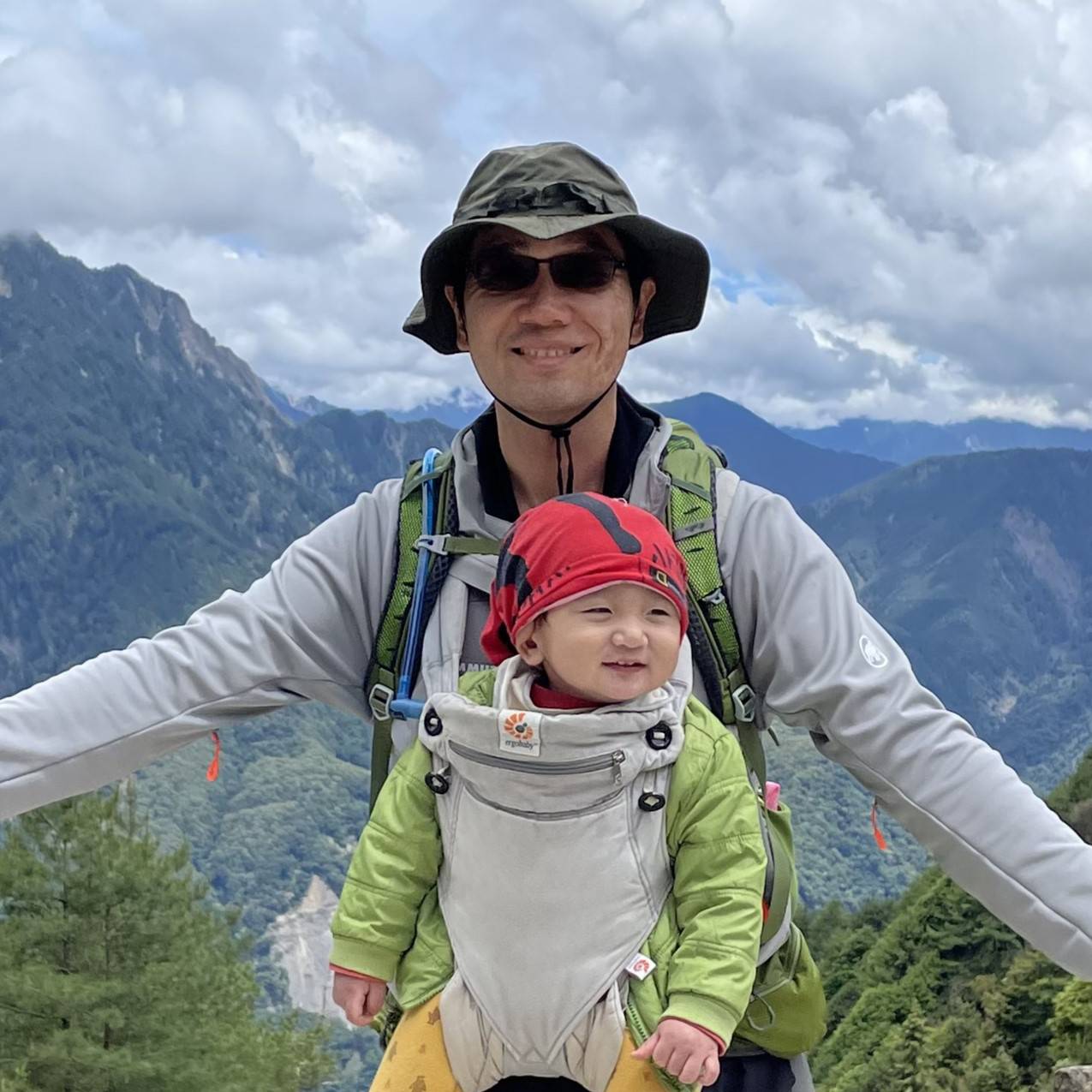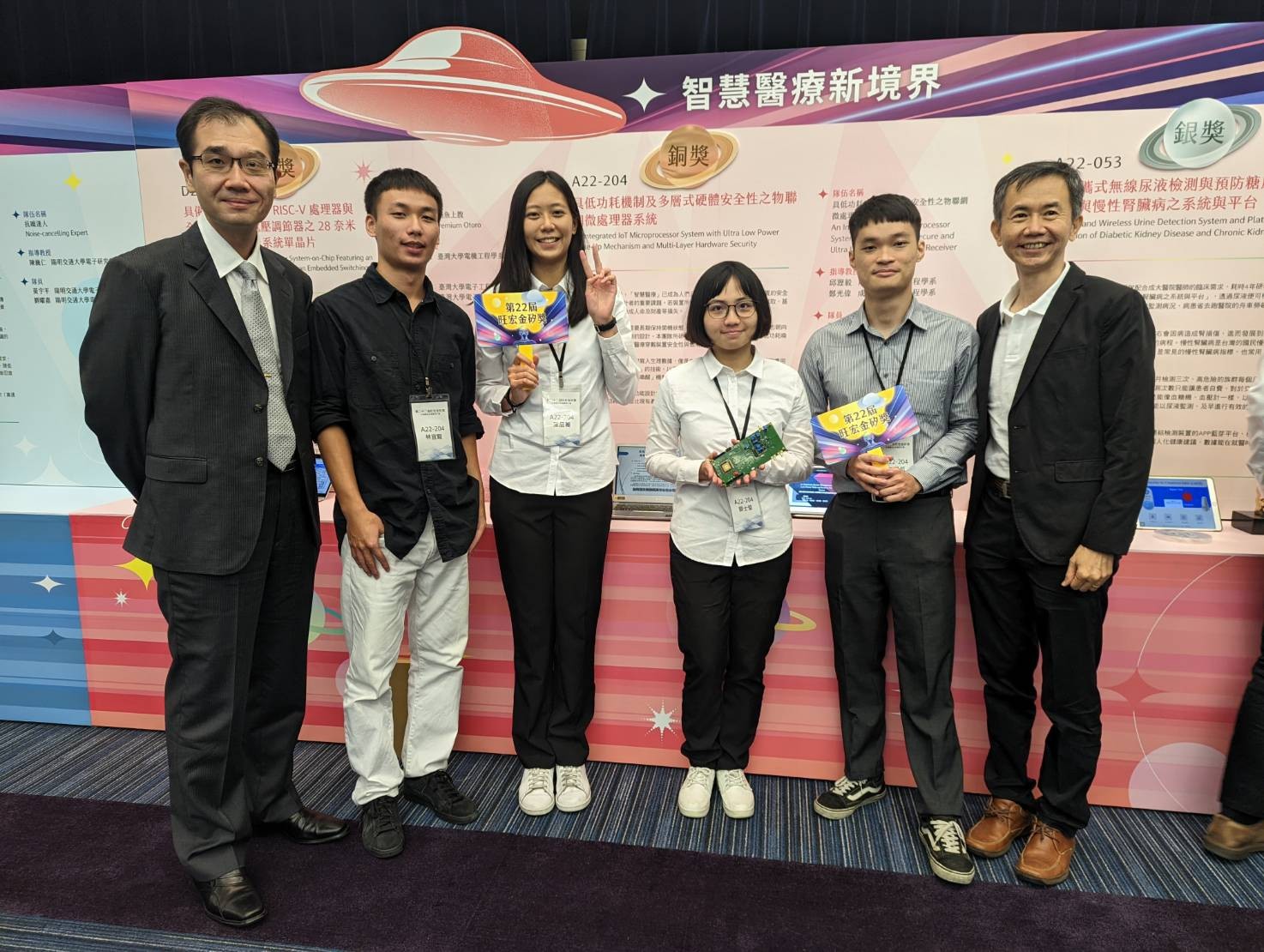PROJECTS
Government Research Projects
1. Co-Principal Investigator, “晶片前瞻技術模組教材發展計畫—前瞻設計模組” Ministry of Education, Jan. 2024–Mar. 2025.
2. Principal Investigator, “Ultra-low power multi-mode multi-channel wireless transmitter for the IOT,” Ministry of Science and Technology, Taiwan, Aug. 2023–Jul. 2026.
3. Principal Investigator, “NSF ACED: ROOTS: Real-time Optimization Of Transceiver Systems,” Ministry of Science and Technology, Taiwan, Jul. 2023-Jun. 2026.
4. Co-Principal Investigator, “Analysis, design and implementation of high-security, low-power IoT circuits and systems,” Semiconductor Moonshot Project, Ministry of Science and Technology, Taiwan, May. 2018–April 2022.
5. Principal Investigator, “Ultra-Low-Power High-Sensitivity Receiver for Low-Power Wide-Area Network and Narrowband Internet of Things Applications,” Ministry of Science and Technology, Aug. 2022–Jul. 2023.
6. Principal Investigator, “Ultra-Low-Power Interferer-Resilient Wireless Transceiver for High RF Security Wake-Up IoT systems,” Semiconductor Moonshot Project, Ministry of Science and Technology, Taiwan, May. 2018–April 2022.
7. Co-Principal Investigator, “The development of wireless lead-free piezoelectric MEMS accelerometers system with low power consumption”, National Applied Research Laboratories, Taiwan, Jun. 2017–Aug 2019.
8. Principal Investigator, “Ultra-low-power multi-mode wireless transceiver for IoT applications,” Ministry of Science & Technology, Taiwan, Aug. 2016–Jul. 2019.
9. Principal Investigator, “Low power quadrature voltage-controlled oscillator,” National Science Council, Taiwan, Aug. 2013–Jul. 2015.
10. Co-Principal Investigator, “A self-sustained wireless communication system with green energy harvesters,” National Program for Intelligent Electronics, Ministry of Science and Technology, Taiwan, May. 2013–April 2016.
11. Principal Investigator, “An ultra-low power, miniaturized transceiver for autonomous radio,” National Program for Intelligent Electronics, Ministry of Science and Technology, Taiwan, May. 2013–April 2016.
12. Principal Investigator, “Ultra low power wake-up receiver for wireless sensor networks”, National Science Council, Taiwan, Aug. 2012–Jul. 2013.
Industry Research Projects
1. Principal Investigator, “Design of High Sensitivity Rectifier for RFID,” UltraChip, Oct. 2022–Sep. 2023.
2. Principal Investigator, “Low voltage phase lock loop,” Novatek Technologies, Inc., Taiwan, Sep. 2022-Aug. 2024.
3. Co-Principal Investigator, “High-Security and Low-Power Design & Test Technologies for SOC in IoT Edge Nodes,” Qualcomm Technologies, Inc., San Diego, CA, US, Jul. 2022–Jun. 2024.
4. Principal Investigator, “Low Power Low Jitter Clock Generator,” Himax Technologies, Inc., Taiwan, Mar. 2022–Feb. 2024.
5. Co-Principal Investigator, “TSMC-NCKU RF Research Center,” Taiwan Semiconductor Manufacturing Company Limited (TSMC), Taiwan, and Ministry of Science and Technology, Taiwan, July 2021–Jun. 2023.
6. Co-Principal Investigator, “AI and PUF-based Technologies for Low-power and Secure IoT Chips and Networks,” Qualcomm Technologies, Inc., San Diego, CA, US, Jun. 2020–May 2022.
7. Principal Investigator, “Design and Measurement of Radio Frequency Identification,” UltraChip, Taiwan, Jan. 2020–Jul. 2020.
8. Principal Investigator, “Wireless RF Energy Harvester,” CMOS-Crystal, Taiwan, Aug. 2018–Jul. 2019.
9. Principal Investigator, “Ultra-Low-Power Wake-Up Receiver for Self-Powering Sensor Platform,” Industrial Technology Research Institute, Taiwan, Dec. 2016–Dec 2017.
10. Principal Investigator, “Ultra Low Power Capacitive to Digital Converter for Environmental Humidity Detection on Self-Powering Sensor Platform,” Industrial Technology Research Institute, Taiwan, Dec. 2015–Dec 2016.
College Student Research Projects
1. Advisor, “A 30μW 2.4GHz LNA Utilizing Trifilar Transformer in 90nm CMOS Technology”, College Student Research Scholarship, Ministry of Science and Technology, Taiwan, Jul. 2020–Feb. 2021. (專題生: 楊登燊/蕭學謙)
2. Advisor, “Wi-Fi 無線獵能裝置”, Capstone Program, College of Electrical Engineering and Computer Science, National Cheng Kung University, Taiwan, March. 2016–Dec. 2016. (專題生:陳偉偉、蔡治廷、余欣翰、李暘、童耀新、陳國棨)
3. Advisor, “應用於腦波感知安全帽之神經放大器”, College Student Research Scholarship, Ministry of Science and Technology, Taiwan, Jul. 2015–Feb. 2016. (專題生: 張權安/李暘)
4. Advisor, “無線電獵能裝置轉換驅動電子鐘”, College Student Research Scholarship, Ministry of Science and Technology, Taiwan, Jul. 2014–Feb. 2015. (專題生: 陳偉偉/蔡治廷)
PUBLICATIONS
Journal Articles
1. S.-K. Chang, Z.-W. Lin, and K.-W. Cheng, “A Multi-Channel Injection-Locked OOK Transmitter with Current Mode Edge-Combining Power Amplifier,” IEEE Solid-State Circuits Letters, vol. 7, pp. 111-114, 2024. (Invited)
2. K.-W. Cheng, S.-K. Chang, S.-T. Chang, S.-L. Li, and Y.-C. Huang, “A 11 pJ/bit Multichannel OOK/FSK/QPSK Transmitter with Multi-Phase Injection-Locking and Frequency Multiplication Techniques,” IEEE Trans. on Circuits and Systems I: Regular Papers, vol. 70, no. 12, pp. 5229-5241, Dec. 2023
3. C.-Y. Li, Z.-H. Chen, H.-Y. Kao, P.-Y. Hsiao, Y.-H. Huang, S.-K. Chang, Y.-C. Huang, S.-Y. Chu, C.-L. We, Y.-H. Liu, K.-W. Cheng, C.-C. Tsai, “Design and development of a low-power wireless MEMS lead-free piezoelectric accelerometer system,” IEEE Trans. on Instrumentation and Measurement, vol. 72, pp. 1-11, Feb. 2023
4. K.-W. Cheng, S. K. Chang, B. S. Li, and Z. T. Tsai, "Design and Analysis of a Resistive Frequency-Locked Oscillator With Long-Term Stability Using Double Chopper Stabilization," IEEE Transactions on Circuits and Systems I: Regular Papers, vol. 70, no. 2, pp. 655-666, Feb. 2023.
5. K.-W. Cheng, W. W. Chen, and S. D. Yang, "A Low Power Sub-GHz Wideband LNA Employing Current-Reuse and Device-Reuse Positive Shunt-Feedback Technique," IEEE Microwave and Wireless Components Letters, vol. 32, no. 12, pp. 1455-1458, Dec. 2022.
6. K.-W. Cheng and S. -E. Chen, "An Ultralow-Power OOK/BFSK/DBPSK Wake-Up Receiver Based on Injection-Locked Oscillator," in IEEE Transactions on Very Large Scale Integration (VLSI) Systems, vol. 29, no. 7, pp. 1379-1391, Jul. 2021.
7. S.-E. Chen, J.-S. Lin, H.-F. Li, and K.-W. Cheng, “A Reference-Less Wake-Up Receiver With Noise Suppression and Injection-Locked Clock Recovery”, in IET Circuits, Devices & Systems, vol. 14, no. 2, pp. 168-175, Mar. 2020.
8. K.-W. Cheng, S.-K. Chang, and Y.-C. Huang, “Low-Power and Low-Phase-Noise Gm-Enhanced Current-Reuse Differential Colpitts VCO”, IEEE Trans. on Circuits and Systems II: Express Briefs, vol. 66, no. 5, pp. 733-737, May 2019.(Invited)
9. K.-W. Cheng and S.-E. Chen, “An Ultra-Low-Power Wake-Up Receiver Based on Direct Active RF Detection,” IEEE Trans. on Circuits and Systems I, vol.64, no.7, pp. 1661-1672,July 2017.
10. K.-W. Cheng and Y.-R. Tseng, “5 GHz CMOS Quadrature VCO Using Trifilar-Transformer-Coupling Technology,” IEEE Microwave and Wireless Components Letters, vol. 26, no. 9, pp. 717-719, Sep. 2016.
11. X. Zou, L. Liu, J. H. Cheong, L. Yao, P. Li, M.-Y. Cheng, W. L. Goh, R. Rajkumar, G. S. Dawe, K.-W. Cheng, and M. Je, “A 100-Channel 1-mW Implantable Neural Recording IC,” IEEE Trans. on Circuits and Systems I, vol. 60, no. 10, pp. 2584-2596, Oct. 2013.
12. R.-F. Xue, K.-W. Cheng, and M. Je, “High-Efficiency Wireless Power Transfer for Biomedical Implants by Optimal Resonant Load Transformation,” IEEE Trans. on Circuits and Systems I, vol. 60, no. 4, pp. 867-874, Apr. 2013.
13. K.-W. Cheng and M. Je, “A Current-Switching and gm-Enhanced Colpitts Quadrature VCO,” IEEE Microwave and Wireless Components Letters, vol. 23, no. 3, pp. 143-145, 2013.
14. K.-W. Cheng, K. Natarajan, and D. J. Allstot, “A Current Reuse Quadrature GPS Receiver in 0.13µm CMOS,” IEEE J. Solid-State Circuits, vol.45, no.3, pp.510-523, Mar. 2010.
15. Y. Tang, K.-W. Cheng, S. Gupta, J. Paramesh, and D. J. Allstot, “Cascaded Complex ADCs with Adaptive Digital Calibration for I/Q Mismatch,” IEEE Trans. on Circuits and Systems I, vol.55, no.3, pp. 817-827, Apr. 2008.
Conference papers
1. T-J Hsu, J-H Hong, and K.-W. Cheng, “28 GHz VCO Using Magnetically Tuning Trifilar Transformer in Cryogenic CMOS Application,” in IEEE Int. Symp. on Circuits and Systems (ISCAS), May 2024, pp. 1-4
2. S.-K. Chang, S.-T. Chang, Z.-W. Lin, and K.-W. Cheng, “An 890 μW Multichannel Injection-Locked OOK Transmitter with 23% Global Efficiency and 22 pJ/bit Energy Efficiency,” in IEEE Asian Solid-State Circuits Conf. (ASSCC), Nov. 2023, pp. 1-3. (Invited paper of A-SSCC special session at 2024. CICC)
3. S. Wang and K.-W. Cheng, “A 24 GHz Single‐To‐Differential LNA With Transformer Coupling and Current Reuse Techniques,” in Taiwan and Japan Conf. on Circuits and Systems (TJCAS), Sep. 2023.
4. T.-J. Hsu, C.-A. Shen, and K.-W. Cheng, “28 GHz VCO Using Magnetically Tuning Trifilar Transformer for Flicker Noise Up-Conversion Suppression,” in VLSI Design/CAD Symp., Aug. 2023.
5. Y.-H. Hsia, M.-H. Kuo, and K.-W. Cheng, “Low Power Low Noise Receiver With Sub-Harmonic and Gain Enhanced N-Path Mixers,” in VLSI Design/CAD Symp., Aug. 2023.
6. P. C. Yeh, S. E. Chen, and K. W. Cheng, "A 433MHz Multi-Mode Wake-Up Receiver Achieving High Sensitivity via Balun LNA and Injection Locked Oscillator," in 2023 21st IEEE Interregional NEWCAS Conference (NEWCAS), 26-28 June 2023.
7. Y. S. Hsieh, B. S. Li, and K. W. Cheng, "A 0.98 pJ/Cycle 3.7 ppm Long-Term Stability Frequency-Locked Oscillator with Switched-Capacitor and Switched-Resistor Techniques," in 2023 IEEE International Symposium on Circuits and Systems (ISCAS), 21-25 May 2023.
8. Y.-S. Hsieh, B.-S. Li, and K.-W. Cheng, “A 0.98 pJ/Cycle 3.7 ppm Long-Term Stability Frequency-Locked Oscillator with Switched-Capacitor and Switched-Resistor Techniques,” in Taiwan and Japan Conf. on Circuits and Systems (TJCAS), Nov. 2022.
9. S. E. Chen, Y. C. Lin, and K. W. Cheng, "A High Sensitivity RF Energy Harvester with Dynamic Body-Biasing CMOS Rectifier," in 2022 20th IEEE Interregional NEWCAS Conference (NEWCAS), 19-22 June 2022.
10. P.-C. Yeh, S.-E. Chen, and K.-W. Cheng, “A 187 μW Multi-Mode Wake-Up Receiver Achieving –97 dBm Via a Balun LNA,” in VLSI Design/CAD Symposium, Aug. 2022. (Best Paper Honorable Mention)
11. B.-S. Li, S.-K. Chang, Z.-T. Tsai, and K.-W. Cheng, “A 1.17-nW/kHz Frequency-Locked On-Chip Wake-Up Timer in 0.18-μm CMOS, ” in VLSI Design/CAD symp., Aug. 2021.
12. S.-K. Chang, Z.-T. Tsai, and K.-W. Cheng, “A 250 kHz Resistive Frequency-Locked On-Chip Oscillator with 24.7 ppm/°C Temperature Stability and 2.73 ppm Long-Term Stability”, in IEEE Int. Symp. on Circuits and Systems (ISCAS), Oct. 2020.
13. Y.-T. Chiu , K.-W. Cheng, “ Quick Start-Up Crystal Oscillator Using Calibrated Injection Technique, ” in VLSI Design/CAD symp., Aug. 2020.
14. S.-K. Chang, S.-D. Yang, K.-W. Cheng, “A Direct FSK/QPSK Modulation Transmitter Employing Dual Injection Locking Techniques, ” in Taiwan and Japan Conference on Circuits and Systems, Aug. 2019.
15. Y.-C. Huang, S.-K. Chang, and K.-W. Cheng, “A 2.4 GHz Gm-Boosted Complementary Current-Reuse Colpitts VCO with FoM of 189 dBc/Hz in 0.18 μm CMOS, ” in VLSI Design/CAD symp., Aug. 2019.
16. Y.-C. Huang, S.-K. Chang, and K.-W. Cheng, “Low-Power and Low-Phase-Noise Gm-Enhanced Current-Reuse Differential Colpitts VCO”, in IEEE Int. Symp. on Circuits and Systems (ISCAS), May 2019, pp. 1-4.
17. W.-W. Chen, and K.-W. Cheng, “A UWB CMOS LNA with Current Reuse Negative Feedback, ” in VLSI Design/CAD symposium, Aug. 2018
18. S.-K. Chang, K.-W. Chen, S.-D. Yang, C.-L. Yang, and K.-W. Cheng, “An Autonomous Wireless Transmitter with Piezoelectric Energy Harvester from Short-Duration Vibrations”, in IEEE Int. Symp. on Circuits and Systems (ISCAS), May 2018, pp. 1-4.
19. W.-W. Chen, S.-D. Yang, and K.-W. Cheng, “A 1.2 V 490 μW Sub-GHz UWB CMOS LNA with Current Reuse Negative Feedback”, in IEEE Int. Symp. on Circuits and Systems (ISCAS), May 2018, pp. 1-4.
20. S.-K. Chang, and K.-W. Cheng, “A Low Power Gm-Enhanced Current-Reuse Differential Colpitts QVCO, ” in VLSI Design/CAD symposium, Aug. 2017
21. S.-E. Chen and K.-W. Cheng, “A 433 MHz 54 μW OOK/FSK/PSK Compatible Wake-Up Receiver with 11 μW Low-Power Mode Based on Injection-Locked Oscillator” in IEEE European Solid-State Circuits Conference (ESSCIRC), Sep. 2016, pp. 137-140.
22. C.-M. Chou and K.-W. Cheng, “A Sub-2 dB Noise-Figure 2.4 GHz LNA Employing Complementary Current Reuse and Transformer Coupling” in IEEE International Symposium on Radio-Frequency Integration Technology (RFIT), Aug. 2016, pp. 1-3. (Final list of Best Student Paper Award)
23. K.-W. Cheng, J.-S. Lin, and S.-E. Chen, “Reference-Less Ultra-Low-Power Wake-Up Receiver with Noise Suppression” in URSI Asia-Pacific Radio Science Conference, Aug. 2016, pp. 994-997. (Invited)
24. M. Je, J. H. Cheong, C. K. Ho, S. S. Y. Ng, R.-F. Xue, H.-K. Cha, X. Liu, W.-T. Park, L. S. Lim, C. He, K.-W. Cheng, X. Zou, Z. Chen, L. Yao, S. J. Cheng, P. Li, L. Liu, M.-Y. Cheng, Z. Duan, R. Rajkumar, Y. Zheng, W. L. Goh, Y. Guo, G. Dawe, “Wireless sensor microsystems for emerging biomedical applications” in IEEE International Symposium on Radio-Frequency Integration Technology (RFIT), Aug. 2015, pp. 139-141.
25. S.-E. Chen, Chin-Lung Yang, and K.-W. Cheng, “A 4.5 μW 2.4 GHz Wake-Up Receiver Based on Complementary Current-Reuse RF Detector” in IEEE Int. Symp. on Circuits and Systems (ISCAS), May 2015, pp. 1214-1217.
26. S.-E. Chen and K.-W. Cheng, “A 433MHz 6.4μW FSK Receiver with -68dBm Sensitivity Based on Injection-locked Frequency-to-Amplitude Conversion” in IEEE Int. Solid-State Circuits Conf. (ISSCC) - Student Research Preview(SRP), Feb. 2015.
27. J. Lee, V. V. Kulkarni, C. K. Ho, J. H. Cheong, P. Li, J. Zhou, W. Toh, X. Zhang, Y. Gao, K.-W. Cheng, X. Liu, M. Je, “A 60 Mb/s Wideband BCC Transceiver with 150 pJ/b RX and 31 pJ/b TX for Emerging Wearable Applications,” in IEEE Int. Solid-State Circuits Conf. (ISSCC) Dig. Tech. Papers, Feb. 2014, pp. 498-499.
28. X. Zhang, R. Xue, K.-W. Cheng, J. Cheong, C. Ho, L. Yao, C. He, and M. Je, “Design of High-Efficiency Inductive Power Transfer Coils for Biomedical Implants,” in IEEE MTT-S Int. Microwave Workshop Series on RF and Wireless Technologies for Biomedical and Healthcare Applications, Dec. 2013.
29. K.-W. Cheng,X. Liu, and M. Je, “A 2.4/5.8 GHz 10 µW Wake-Up Receiver With -65/-50 dBm Sensitivity Using Direct Active RF Detection,” in IEEE Asian Solid-State Circuits Conf. (ASSCC), Nov. 2012, pp. 337-340.
30. K.-W. Cheng, X. Zou, J. H. Cheong, R.-F. Xue, Z. Chen, L. Yao, H.-K. Cha, S. J. Cheng, P. Li, L. Liu, L. Andia, C. K. Ho, M.-Y. Cheng, Z. Duan, R. Ramamoorthy, Y. Zheng, W. L. Goh, Y. Guo, G Dawe, W.-T. Park, and M. Je, “100-Channel Wireless Neural Recording System with 54-Mb/s Data Link and 40%-Efficiency Power Link,” in IEEE Asian Solid-State Circuits Conf. (ASSCC), Nov. 2012, pp. 185-188.
31. M.-Y. Cheng, W.-T. Park, X. Zou, K.-W. Cheng, K. L. Tan, and M. Je, “A novel integration scheme for A low-profile 3d neuroprobe array microsystem,” in IEEE Asia-Pacific Conf. on Transducers and Micro/Nano Technologies, Jul. 2012.
32. A. T. Do, C. K. Lam, Y. S. Tan, K. S. Yeo, J. H. Cheong, X. Zou, L. Yao, K. W. Cheng, and M. Je, “A 160 nW 25 kS/s 9-bit SAR ADC for neural signal recording applications,” in IEEE 10th International New Circuits and Systems Conference (NEWCAS), Jun. 2012, pp. 525-528.
33. L. Andia, R.-F. Xue, K.-W. Cheng and M. Je, “Closed loop wireless power transmission for implantable medical devices,” in IEEE Int. Symp. on Integrated Circuits. (ISIC), Dec. 2011, pp. 404-407.
34. Z. Chen, K.-W. Cheng, Y. Zheng, and M. Je, “A 3.4-mW 54-Mbps Burst-Mode Injection-Locked FSK Transmitter,” in IEEE Asian Solid-State Circuits Conf. (ASSCC), Nov. 2011, pp. 289-292.
35. S. Gupta, Y. Tang, K.-W. Cheng, J. Paramesh, and D.J. Allstot, “Multi-rate polyphase DSP and LMS calibration schemes for oversampled data conversion systems,” in IEEE Intl. Conf. on Acoustics, Speech, and Signal Processing (ICASSP), May 2011, pp. 1585-1588.
36. N. M. Neihart, K.-W. Cheng, J. S. Walling, S. Yoo, and D. J. Allstot, “A 4-Antenna Transmitter in 0.18µm CMOS using Space-Time BlockCodes,” in IEEE Radio Frequency Integrated Circuits (RFIC) Symp., Jun. 2009, pp. 361-364.
37. K.-W. Chengand D. J. Allstot, “A Gate-Modulated CMOS LC Quadrature VCO,” in IEEE Radio Frequency Integrated Circuits (RFIC) Symp., Jun. 2009, pp. 267-270. (Best Student Paper Award)
38. K.-W. Cheng, K. Natarajan, and D. J. Allstot, “A 7.2mW Quadrature GPS Receiver in 0.13µm CMOS,” in IEEE Int. Solid-State Circuits Conf. (ISSCC) Dig. Tech. Papers, Feb. 2009, pp. 422-423.
39. H.-H. Chang, S.-P. Chen, K.-W. Cheng, and S.-I. Liu, “A 0.8V switched-opamp bandpass ΔΣ modulator using a two-path architecture,” in Proc. IEEE Asia-Pacific Conf. on ASIC, Aug. 2002, pp. 1-4.
Technical Report
鄭光偉、邱怡禎, “免電池物聯網連結的實現,” 科技部<科學發展>月刊, No. 527, 2016年11月.
Patents
1. K.-W. Cheng, C.-A. Shen, and T.-J. Hsu, “Semiconductor device and operating method thereof,” US Patent App. 18/679,255, 2024.。
1. 鄭光偉、吳奕慶、陳仕恩,自我補償互補式整流器,中華民國專利第I623182號,2018年。
2. K.-W. Cheng, W.-H. Ho, and S.-K. Chang, “Ultra Low Power Transmitter Applied in Multi-Channel Frequency Shift Keying (FSK) Communication,” US Patent 9,565,042, 2017.
3. 鄭光偉、何文皓、張勝凱,應用於多通道頻率鍵移通訊的超低功耗發射機,中華民國專利第I535223號,2016年。
4. K.-W. Cheng and M. Je, “Circuit Arrangement and Receiver Including the Circuit Arrangement”, US Patent 8,626,110, 2014 and Singapore Patent 188064, 2014.
5. K.-W. Cheng, Z. Chen, Y. Zheng, R.-F. Xue, and M. Je, “Receiver and Method of Controlling a Receiver,” US Patent App. 13/912,803, 2013.
6. K.-W. Cheng and M. Je, “Quadrature Voltage Controlled Oscillator,” US Patent App. 13/433,776, 2012.
7. Z. Chen, K.-W. Cheng, Y. Zheng, and M. Je, “Method and Apparatus for a Duty-Cycled Harmonic Injection Locked Oscillator,” US Patent 9231596, 2016 and Int. Patent App. WO2012134393, 2012.

































